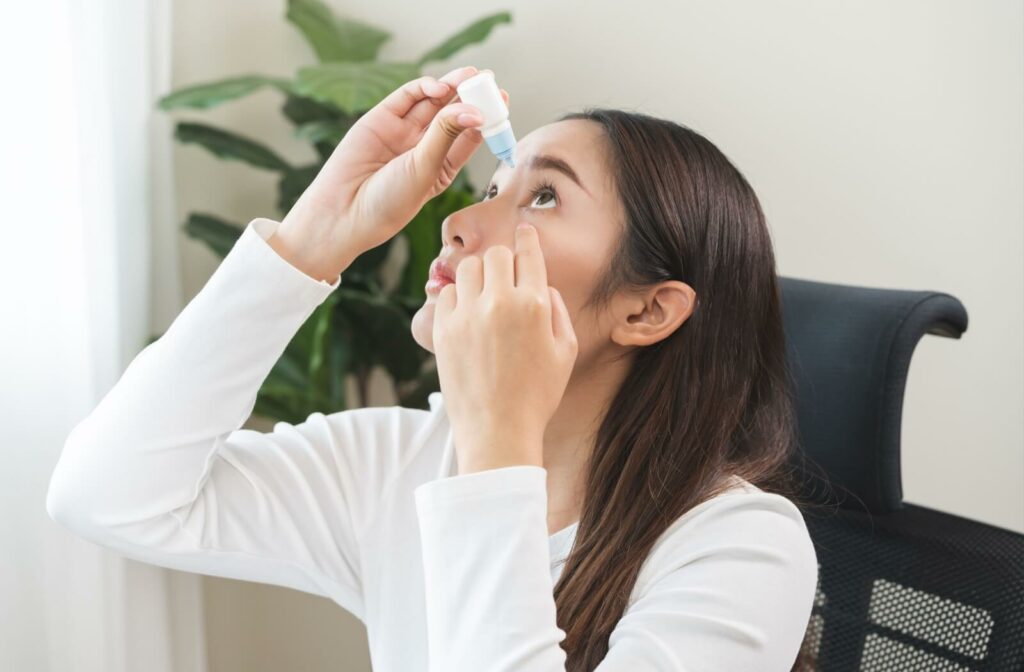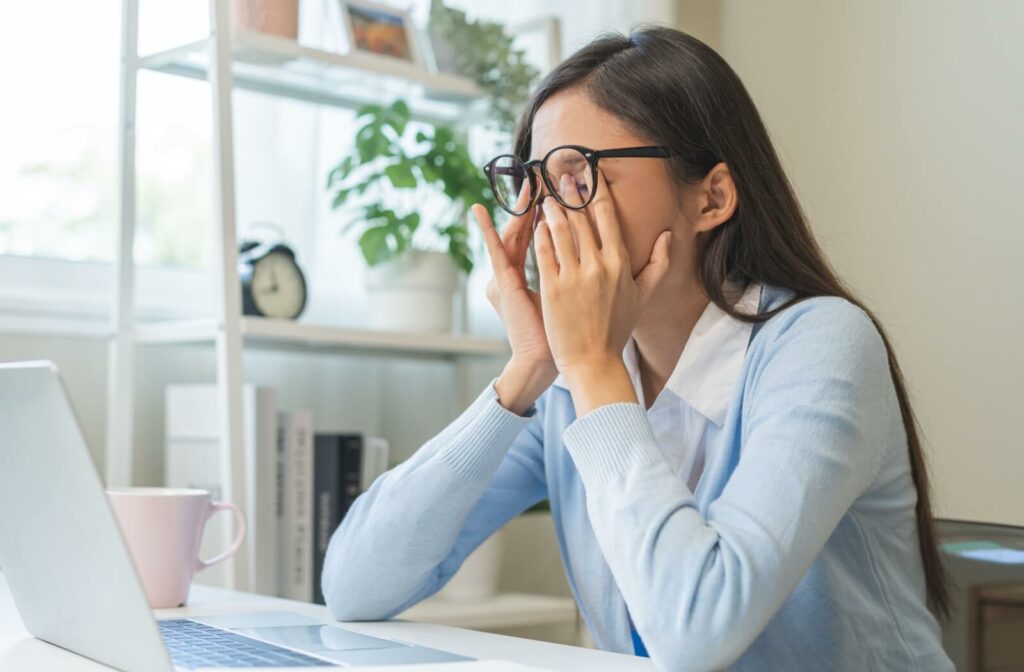At Waterloo Vision Care Clinic, we understand that dry eyes are more than just a nuisance—they can significantly affect the quality of your vision and daily life. In fact, dry eyes can cause blurry vision due to the instability of the tear film, which interferes with how light is focused on the eye’s surface. Whether you suffer from occasional dryness or persistent discomfort, we offer comprehensive dry eye solutions designed to restore both comfort and clarity to your eyes. If you’re tired of dealing with irritation, blurred vision, or other symptoms, our expert team is here to help!
What Are Dry Eyes, and How Do They Affect Your Vision?
Dry eyes occur when the eyes are unable to produce enough tears or when the tears evaporate too quickly, disrupting the tear film on the surface of the eye. This tear film is vital for maintaining clear vision. When it’s unstable, it can cause blurry and or fluctuating vision, making tasks like reading, driving, or working on a computer challenging.
The Impact of Dry Eyes on Vision
The tear film has three layers that work together to protect and hydrate the eye:
- The oily outer layer: Prevents moisture from evaporating.
- The watery middle layer: Keeps the eye hydrated.
- The mucous inner layer: Ensures that tears spread evenly across the surface of the eye.
When any of these layers break down or don’t function properly, the tear film becomes unstable. This results in blurred or fluctuating vision, which can worsen in situations like prolonged screen use, exposure to dry air, or while wearing contact lenses.
Common Causes of Dry Eyes
Dry eye symptoms can arise from a variety of factors. Identifying the root cause is essential for developing an effective treatment plan.
1. Aging
As we age, natural tear production decreases, which is why older adults are more likely to experience dry eyes. For women, hormonal shifts—particularly during menopause—can further decrease tear production.
2. Environmental Factors
Dry air, wind, and air conditioning are common contributors to dry eyes. These environmental conditions lead to faster evaporation of the tear film, particularly in the colder months when indoor heating is prevalent.
3. Lifestyle Factors
Things like long hours on digital screens, insufficient hydration, and frequent contact lens wear can worsen dry eye symptoms. Spending long hours in front of a computer or mobile device can lead to reduced blink rates, contributing to faster tear evaporation.
4. Underlying Medical Conditions
Certain health conditions, such as Sjögren’s syndrome, diabetes, and autoimmune disorders, can lead to chronic dry eyes. Additionally, medications like antihistamines and antidepressants may reduce tear production.

Effective Treatments for Dry Eyes
At Waterloo Vision Care Clinic, we provide a variety of treatments tailored to the severity and cause of your dry eye symptoms. Our goal is to restore comfort and help you achieve clearer vision.
Artificial Tears and Lubricating Drops
For mild cases of dry eyes, over-the-counter artificial tears can offer temporary relief. These lubricating drops supplement the natural tear film and provide hydration to the eyes. They’re a quick solution for dry eyes caused by environmental factors like air conditioning or prolonged screen used
For more persistent cases, we may prescribe medications designed to increase tear production and reduce inflammation in the eyes. These treatments are beneficial for those with moderate to severe dry eye disease.
Nutritional Supplements for Eye Health
Adding omega-3 fatty acids to your diet can help improve the quality of your tears. Foods like salmon, flaxseeds, and walnuts are great for maintaining healthy tear production. You may also benefit from specialized eye health supplements that support tear quality.
Lifestyle Modifications and Environmental Adjustments
Making small changes in your daily habits can go a long way in managing dry eyes:
- Take regular screen breaks: Follow the 20-20-20 rule—take a 20-second break every 20 minutes to look at something 20 feet away to prevent digital eye strain.
- Use a humidifier: Adding moisture to the air can help prevent the tears from evaporating too quickly, especially in dry indoor environments.
- Modify contact lens usage: Reduce wear time, and consider switching to lenses designed for dry eyes to reduce strain on your tear film.
Custom Dry Eye Treatment Plan
At Waterloo Vision Care Clinic, we create personalized treatment plans for each patient. Our goal is to not only treat the symptoms of dry eyes but also to address the root cause, ensuring long-term relief and improved vision clarity.
When Should You Consult an Optometrist?
While temporary dryness and occasional discomfort are common, there are times when dry eyes may require professional attention. If you experience any of the following, it’s time to schedule an appointment:
- Frequent blurry or fluctuating vision
- A gritty or burning sensation in your eyes
- Increased redness or irritation
- Difficulty wearing contact lenses
Early diagnosis and treatment can help prevent long-term damage to your eyes and improve your quality of life.
Get Dry Eye Treatment at Waterloo Vision Care Clinic
At Waterloo Vision Care Clinic, we offer advanced, personalized treatments for dry eyes to help restore comfort, clarity, and long-term eye health. If you’re tired of dealing with the discomfort and blurred vision that comes with dry eyes, we are here to help. Contact us today to schedule your consultation and take the first step toward healthier, more comfortable eyes!




